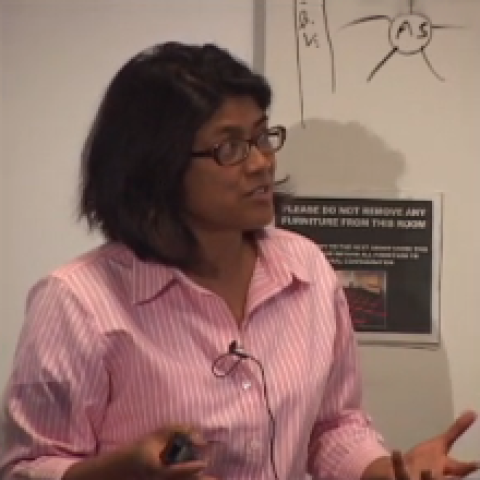 SANOFI-SUPPORTED BIOSTAR SPONSORED RESEARCH PROJECT - 2013
SANOFI-SUPPORTED BIOSTAR SPONSORED RESEARCH PROJECT - 2013
Mary Teruel (Chemical and Systems Biology)
Fredric Kraemer (Medicine)
John Morton (Surgery)
Thomas Quertermous (Medicine)
More than 25% of American adults have insulin resistance, a condition which is highly correlated with subsequent development of diabetes and cardiovascular disease. However, the few therapies to treat insulin resistance are not effective in many adults, and there is a great need for new therapeutics, especially since the last new type of drugs, TZDs, were introduced more than 15 years ago in 1997 and have recently been pulled from the market due their side effects. To develop new therapeutics, one needs to understand the molecular mechanisms of the insulin resistant condition. The challenge has been that this disease is caused by an interconnected regulatory system rather than a simple genetic defect. Being able to monitor a network of molecules in cells with many connections is challenging, but in the Teruel Lab, we have developed powerful new experimental tools to visualize for the first time how this network functions in single fat cells and also have developed a biochemical technology to monitor for the first time how hundreds of key molecules interact in cells with different degrees of insulin resistance. The first approach combines the use of novel fluorescent sensors that are introduced into cells with automated microscopy to monitor the changes in the biosensor fluorescence over time in thousands of cells in order to obtain the necessary statistics to understand how the key molecules interact in cells. The second approach uses targeted mass spectrometry to rapidly and reproducibly measure in parallel the concentration and activity of over one hundred important low-abundant molecules in cells that regulate different insulin resistant processes and allow us to quantitatively measure whole networks of molecules in a single sample to elucidate what specific drugs actually do in cells. Our data thus far argues that novel combined treatment strategies are needed to treat insulin-resistance, and our work is pointing to a number of weak links in the complex regulatory network suitable for such a combination therapy. The need for a combination therapy is also supported by clinical results which showed that single molecular target therapies were not effective in most patients.
Fat cells, which make up 25% of the typical American adult’s body mass, play a critical role in regulating our body’s blood glucose levels, and thus, having functioning mature fat cells is critical for preventing insulin resistance. By applying our lab’s novel experimental approaches to fat cells derived from mouse and recently humans, we developed the first quantitative molecular model of how functioning mature fat cells are generated from precursor cells. The goal of the proposed work is to translate our model and molecular findings obtained in mouse cells to understanding and treating insulin resistance in human patients. Combining the Teruel Lab’s basic science and technical expertise with Drs. Kraemer, Quertermous, and Morton’s human patient and clinical expertise will likely enable the translation of our lab bench discoveries in the areas of adipogenesis and inflammation into useful drugs and therapies needed to treat the current epidemic of insulin resistance and diabetes in human patients.




